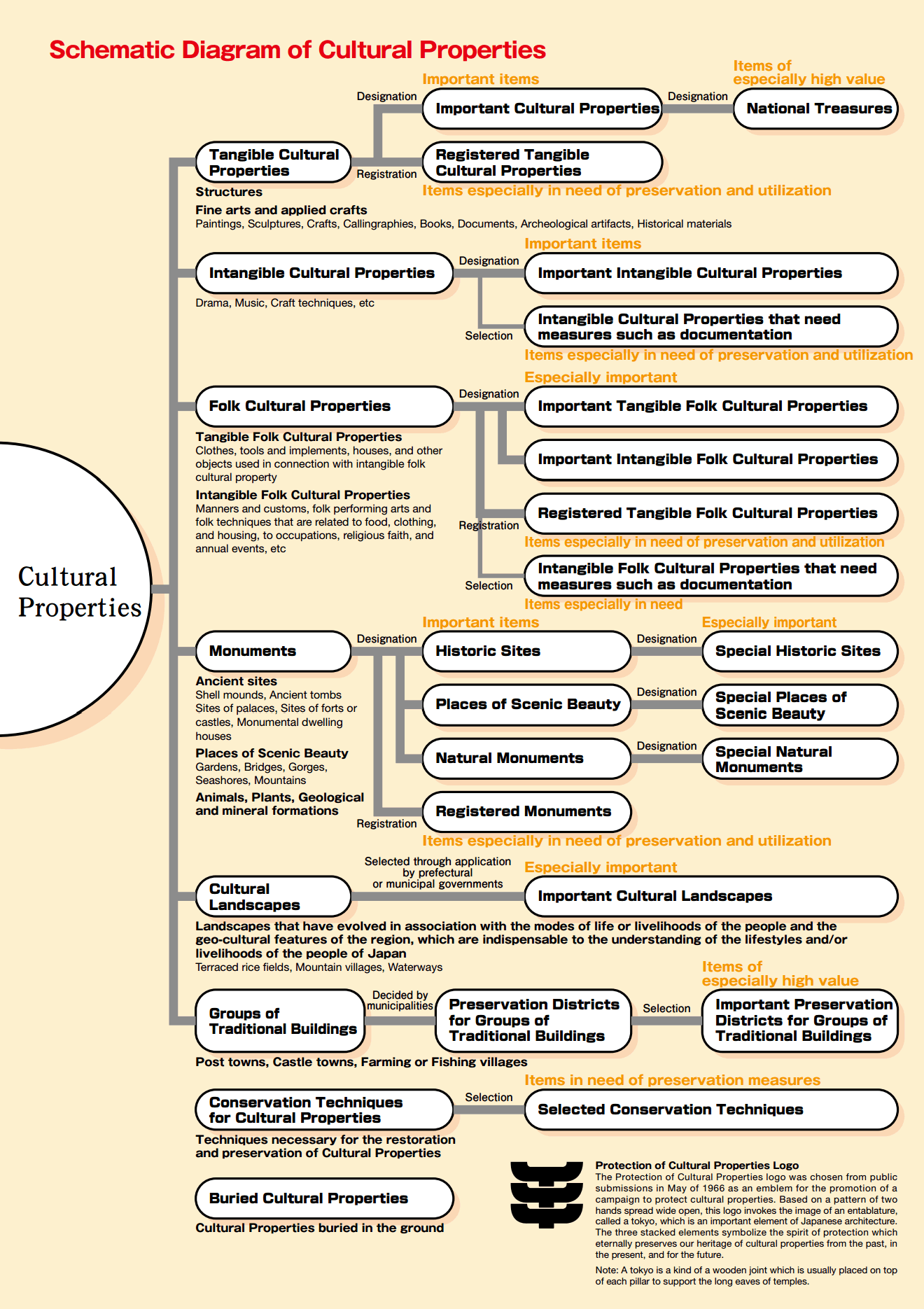Types, Designation, Selection, and Registration of Cultural Properties
The Law for the Protection of Cultural Properties defines cultural properties as "Tangible Cultural Properties," "Intangible Cultural Properties," "Folk Cultural Properties," "Monuments," "Cultural Landscapes," and "Groups of Traditional Buildings." The national government designates, selects, and registers cultural properties of higher importance to prioritize them for more focused protection. The designation, selection, and registration of cultural properties are carried out by the Minister of Education, Culture, Sports, Science and Technology on the basis of reports submitted by the Council for Cultural Affairs in response to a ministerial inquiry (see Diagram 1).
Intangible Cultural Properties and Intangible Folk Cultural Properties that require measures in addition to designation, such as making records, are selected by the Commissioner for Cultural Affairs to ensure the work is recorded.
Other cultural properties include Buried Cultural Properties that lie underground, and Conservation Techniques for Cultural Properties, or traditional techniques and skills required to preserve and repair cultural properties. They are also protected.
While the national government imposes restrictions on the alteration of the existing state of cultural properties, to ensure the preservation and utilization of cultural properties the National Treasury provides support for repair work and various other measures.








